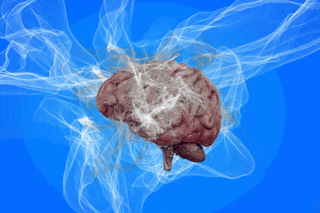Artificial Intelligence
Novel AI Method for Neuroscience and Brain Disease Research
AI predicts cognitive impairment, dementia, and Alzheimer’s Disease.
Posted September 28, 2022 Reviewed by Kaja Perina

A new study shows how artificial intelligence (AI) is a powerful new paradigm to conduct neuroscience and disease research for conditions such as dementia, Alzheimer’s disease, and other cognitive disorders.
This new research was led by Andrew McKenzie, MD, PhD, Co-Chief Resident for Research in the Department of Psychiatry at Icahn Mount Sinai, in collaboration with scientists affiliated with the Boston University School of Medicine in Boston, UT Southwestern Medical Center in Dallas, University of Texas Health Science Center in San Antonio, and Newcastle University in Tyne, United Kingdom.
“To pave the way towards better prevention and treatment options for age-related cognitive impairment, there is an urgent need to identify the structural features of brain microanatomy that are robustly associated with the condition using unbiased assessment protocols,” the researchers wrote. “One approach to identifying structural correlates of cognitive impairment is to perform clinicopathologic correlation in postmortem human brains.”
Alzheimer’s disease (AD) is the most common type of dementia and a progressive neurodegenerative disease that destroys brain cells over time and is characterized by changes in the brain such as amyloid plaques and neurofibrillary tangles called tau that may impact memory, cognition, and the ability for a person to live independently.
Globally, an estimated 47 million people are living with Alzheimer’s disease (AD), a figure that is expected to reach 76 million by 2030 according to the Alzheimer’s Association. The exact cause of Alzheimer’s disease as well as other cognitive disorders is not yet fully understood.
In the U.S. alone, there are 5.8 million Americans with Alzheimer’s disease, of which two-thirds are women according to a report by AARP and the Women’s Alzheimer’s Movement (WAM). By 2050, the number of Americans living with Alzheimer’s disease is projected to reach 16 million according to the Harvard NeuroDiscovery Center at Harvard Medical School.
Artificial intelligence is the field of computer science that seeks to enable machines to perform tasks associated with the human brain, such as cognition, learning, and problem-solving. Machine learning is a subset of artificial intelligence, where computer systems are able to perform tasks without explicit hard-coding of instructions. The ubiquity of AI is due in large part to advances in the pattern-recognition capabilities of deep learning, a type of machine learning whose deep neural network architecture is somewhat inspired by the biological brain. Supervised learning refers to the process of training AI deep learning algorithms with labeled data. Supervised learning is typically used for classification and regression.
To conduct the study, the team used a weakly supervised AI deep learning algorithm and a combination of Python, Pytorch, R, ggplot2, NVIDIA v100 GPUs, and the ImageNet database. Specifically, they repurposed an existing AI classification called clustering-constrained-attention multiple-instance learning (CLAM) to analyze slide imaging of autopsy tissue from the human brain from over 700 donors in order to predict whether there were any signs of cognitive impairment.
The AI was trained to identify areas in the brain samples where there is a reduction of Luxol fast blue (LFB) stain, a copper-based dye. Luxol fast blue staining is a widely used stain to identify myelin in the brain under light microscopy for neuroanatomical analysis.
The whiteness of white matter in the brain is due to the fatty layer of myelin that surrounds the nerve fibers called axons. Myelination enables action potentials to travel down the axon faster than an unmyelinated one. The color gray in gray matter comes from the neuronal cell bodies it contains and has mostly unmyelinated axons. The LFB stain enables the differentiation of white matter from gray matter in brain tissue sections by turning the lipoproteins which are plentiful in myelin sheaths the color blue. Demyelination may be due to traumatic brain injury, multiple sclerosis (MS), and other diseases and disorders.
The researchers trained two sets of models across 10 folds of cross-validation. “While the models have modest accuracy as a pure classification task, in both brain regions the classification accuracy was significantly greater than chance, suggesting that the models have utility for the inference of pathophysiology,” wrote the researchers.
“Our results demonstrate a scalable platform with interpretable deep learning to identify unexpected aspects of pathology in cognitive impairment that can be translated to the study of other neurobiological disorders,” the researchers concluded.
Copyright © 2022 Cami Rosso All rights reserved.


